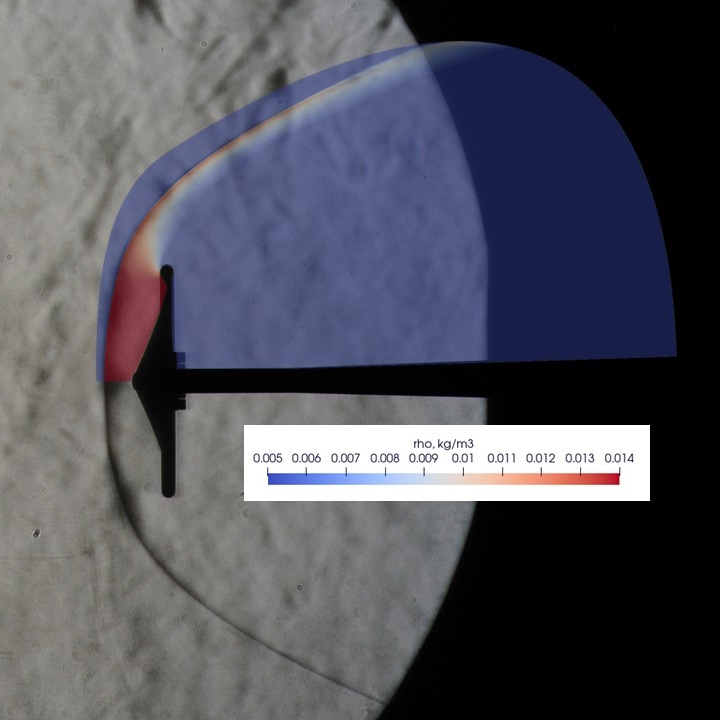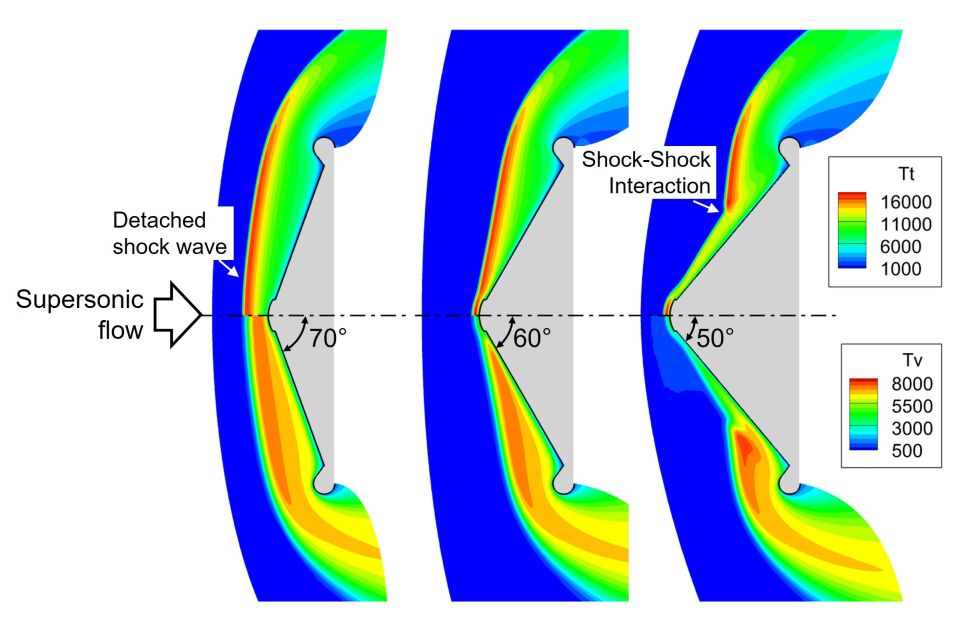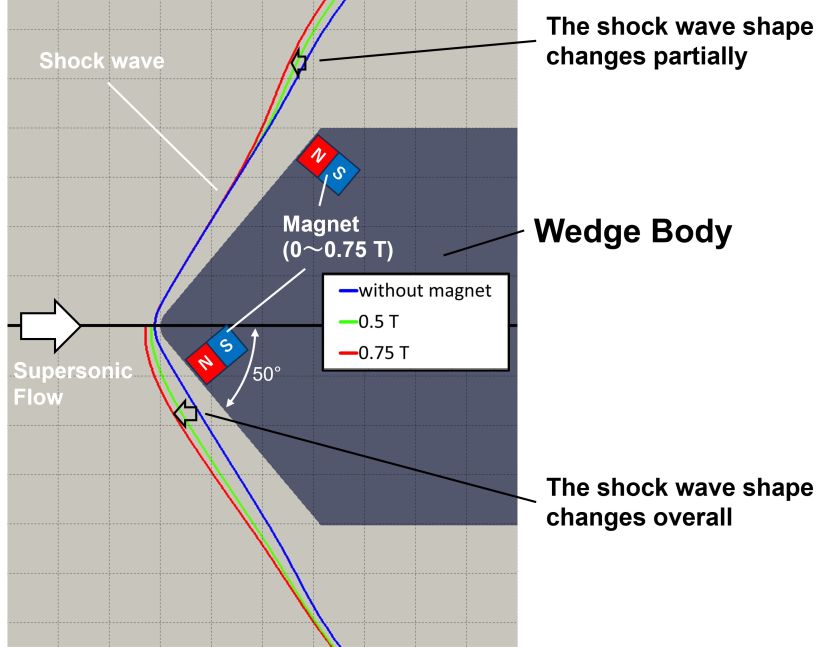Aerothermodynamic analysis for Atmospheric Entry Capsule
JAXA Supercomputer System Annual Report February 2024-January 2025
Report Number: R24EDU10300
Subject Category: Space and Astronautical Science
- Responsible Representative: Yasunori Nagata, Specially-appointed Assistant Professor, Department of Space Flight Systems
- Contact Information: Yasunori Nagata(nagata.yasunori@jaxa.jp)
- Members: Yasunori Nagata, Hibiki Tatsuta, Ritsuki Sato, Tomohito Morimoto, Reo Iida, Hideto Takasawa
Abstract
In atmospheric entry capsules such as the Hayabusa sample return capsule, it is important to predict various fluid phenomena such as aerodynamic heating during the very high speed entry into the atmosphere. In this study, we are conducting thermoaerodynamic analysis of atmospheric entry capsules to understand various phenomena. Specifically, (1) prediction of the thermoaerodynamic environment of a deployable flexible aeroshell flight experimental capsule, (2) evaluation of the thermoaerodynamic environment of capsule models in expansion tube experiments, and (3) understanding of fluid phenomena related to MHD interaction effects are being conducted.
Reference URL
N/A
Reasons and benefits of using JAXA Supercomputer System
In order to properly analyze the flow around an atmospheric entry capsule in hypersonic flight, it is necessary to use a high-quality computational grid with an object-adaptive structure grid. Pointwise, which is available as ISV software, can not only generate a computational grid along an object surface, but can also flexibly adjust the computational grid, significantly reducing the time required to generate the grid. In particular, Pointwise's powerful smoothing functions produce high-quality computational grids even for deployable flexible aeroshell capsules with complex geometries. Therefore, we decided to use ISV software. The fluid analysis was performed on our own workstation using in-house code.
Achievements of the Year
For issue (1), the heat flux measurement experiments were conducted in the 1.27-meter-diameter hypersonic wind tunnel at the Chofu Aerospace Center to evaluate the thermal and aerodynamic environment of a deployable flexible aeroshell during atmospheric entry. The numerical results successfully simulated the shock wave in front of the wind tunnel model (Fig. 1), and the heat flux distributions at the front of the model were also in good agreement with the experiment. In contrast, the maximum heat flux at the rear of the model is in good agreement with the experimental data, although there are some differences in the heat flux distribution. The maximum heat flux at the rear of the model was approximately 3% of the heat flux at the front stagnation point. In the future, 3D fluid analysis will be performed to evaluate the flow field with an angle of attack through comparison with experiments.
For issue (2), an expansion tube is an experimental instrument that can generate a high-speed, high-enthalpy flow and, in particular, can simulate an atmospheric entry flight environment including real gas effects, such as dissociation reactions. For actual flights, such as atmospheric entry flights from low Earth orbit, it is necessary to estimate the thermal and aerodynamic environment of capsules with deployable flexible aeroshells, considering the influence of real gas effects. We conducted 2D axisymmetric fluid analysis considering the real gas effect in order to compare the experiments using a sub-scale model in an expansion tube. The shock wave shape and shock standoff distance depend on the shape of the flexible aeroshell, but the shock layer is thinner when the shape is close to a sharp cone, and at the same time, shock wave interaction occurs near the surface of the aeroshell (Fig. 2). This trend was also observed in visualization experiments using an expansion tube. Further experimental measurements will be performed to verify this trend through comparison with numerical analysis.
For issue (3), the conductivity of the flow due to the ionization reaction of high-enthalpy flow is important for the flow control technology using electromagnetic force for 2D wedge shape. To simulate a more realistic distribution of conductivity and to evaluate its effect on the flow field, an electromagnetic fluid analysis was performed considering the real gas effect. The results were qualitatively similar to those of a previous analysis that combined the ideal gas assumption and a simplified conductivity model, and the shock wave shape changed when electromagnetic force was applied, and the change depending on the way the electromagnetic force was applied was also confirmed (Fig. 3). Meanwhile, the effects of changes in composition and physical properties due to dissociation and ionization reactions are significant, and it is clear that different shock wave angles and different shock layer thicknesses have quantitatively different effects on the flow field. The influence of the real gas effect on the shock wave angle was also observed in an expansion tube experiment. In the future, we will consider experimental condition settings that take these effects into account, and conduct demonstration experiments to further understanding of the phenomena.

Fig.1: Comparison of shock wave shapes around a deployable flexible aeroshell model in a hypersonic wind tunnel experiment

Fig.2: Relation between deployable flexible aeroshell shape, flow field, and shock wave shape (Upper: Translational and rotational temperature contours. Lower: Vibrational and electronic excitation temperature contours)

Fig.3: MHD analysis results considering real gas effect for 2D wedge shape (shock wave shape comparison, Upper: Case of applying magnetic field near the shoulder. Lower: Case of applying near the nose)
Publications
- Oral Presentations
1) Hibiki Tatsuta, Yasunori Nagata, Kazuhiko Yamada, Asei Tezuka, Aerodynamic Heating Analysis of Mars Reentry Vehicle with Deployable Aeroshell in a Hypersonic Wind Tunnel, 68th Space Sciences and Technology Conference, 1I19, 2024.
2) Hibiki Tatsuta, Yasunori Nagata, Kazuhiko Yamada, Asei Tezuka, Aerothermal Environment Prediction of Reentry Capsule with Deployable Aeroshell in Suborbital Reentry Flight Test, AIAA SciTech 2025 Forum, AIAA 2025-0644, 2025.
3) Ritsuki Sato, Yasunori Nagata, Kazuhiko Yamada, Osamu Imamura, Electrodynamic Flow Control Effect on Weakly Ionized Flow Around Wedge Configuration, AIAA SciTech 2025 Forum, AIAA 2025-2497, 2025.
4) Yasunori Nagata, Ritsuki Sato, Shuto Yatsuyanagi, Hideyuki Tanno, Numerical Analysis and Experiment of Electrodynamic Aerobraking Effect on Wedge Symposium on Shock Waves, 3B1-5, 2025.
Usage of JSS
Computational Information
- Process Parallelization Methods: N/A
- Thread Parallelization Methods: N/A
- Number of Processes: 1
- Elapsed Time per Case: 1 Hour(s)
JSS3 Resources Used
Fraction of Usage in Total Resources*1(%): 0.00
Details
Please refer to System Configuration of JSS3 for the system configuration and major specifications of JSS3.
| System Name | CPU Resources Used(Core x Hours) | Fraction of Usage*2(%) |
|---|---|---|
| TOKI-SORA | 668.80 | 0.00 |
| TOKI-ST | 18.79 | 0.00 |
| TOKI-GP | 0.00 | 0.00 |
| TOKI-XM | 0.00 | 0.00 |
| TOKI-LM | 0.00 | 0.00 |
| TOKI-TST | 0.00 | 0.00 |
| TOKI-TGP | 0.00 | 0.00 |
| TOKI-TLM | 0.00 | 0.00 |
| File System Name | Storage Assigned(GiB) | Fraction of Usage*2(%) |
|---|---|---|
| /home | 0.00 | 0.00 |
| /data and /data2 | 0.00 | 0.00 |
| /ssd | 0.00 | 0.00 |
| Archiver Name | Storage Used(TiB) | Fraction of Usage*2(%) |
|---|---|---|
| J-SPACE | 0.00 | 0.00 |
*1: Fraction of Usage in Total Resources: Weighted average of three resource types (Computing, File System, and Archiver).
*2: Fraction of Usage:Percentage of usage relative to each resource used in one year.
ISV Software Licenses Used
| ISV Software Licenses Used(Hours) | Fraction of Usage*2(%) | |
|---|---|---|
| ISV Software Licenses(Total) | 191.81 | 0.13 |
*2: Fraction of Usage:Percentage of usage relative to each resource used in one year.
JAXA Supercomputer System Annual Report February 2024-January 2025


